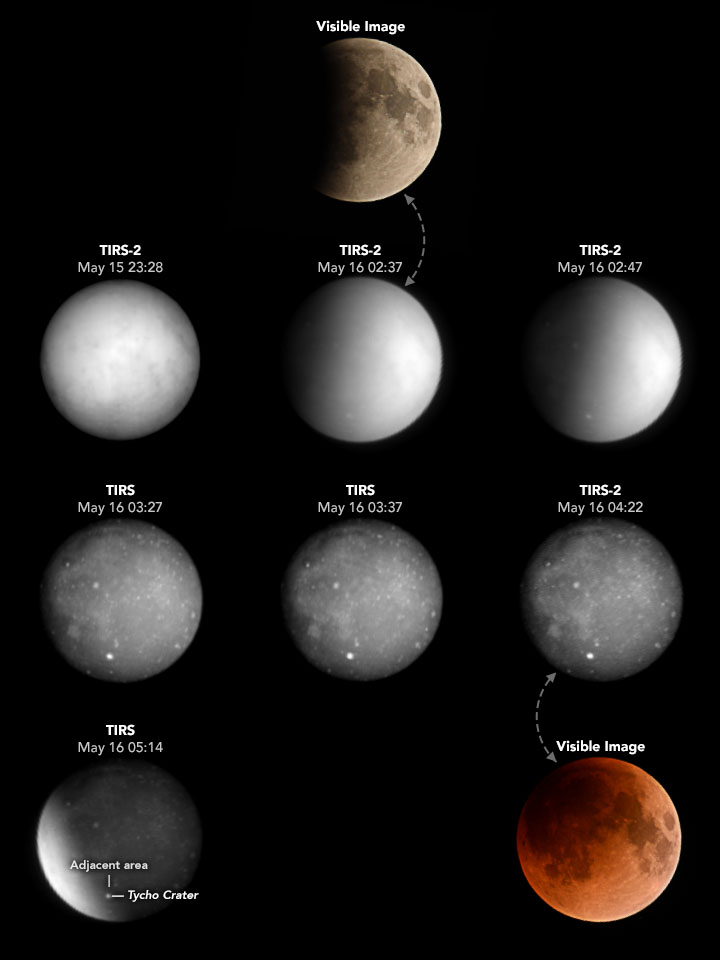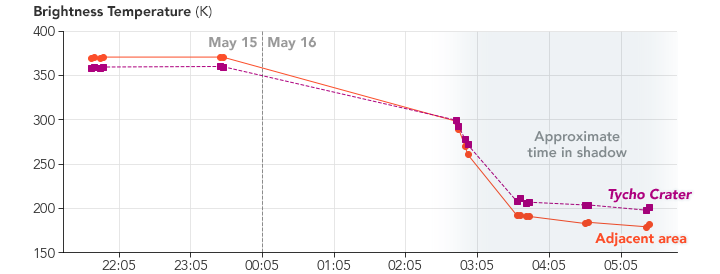NASA used the Landsat 8 and Landsat 9 remote sensing satellites for a very unusual purpose: measuring the temperature of the lunar surface. The observations were made during a lunar eclipse.
Atypical Moon Explorers
On May 16, Earthlings were able to see the longest total lunar eclipse in three decades. In addition to ordinary people, astronomers and the ISS crew, the event was also monitored by spacecraft — including those that are usually busy studying our planet. We are talking about the Landsat 8 and Landsat 9 satellites in Earth orbit.

Landsat 8 and Landsat 9 regularly survey the earth’s surface and monitor all changes that occur. But, as often happens in science, over time, the members of the mission support group came up with a task for the devices that was not included in their original program. Inspired by the results of the OSIRIS-REx asteroid mission, scientists decided to use the devices to study the thermal characteristics of the lunar surface.
It was decided to make observations during a lunar eclipse. At the moment when the earth’s shadow begins to cover the moon, the temperature of its surface begins to decrease. Analyzing data on the speed and magnitude of this drop can help scientists learn more about the properties of the material composing it.
The preparation of the operation was greatly simplified by the fact that although the Landsat 8 and Landsat 9 missions are entirely subordinate to Earth observations, once a month the mission control group deploys them to the Moon. This operation is necessary to calibrate the instruments of the apparatuses.
Moon temperature change
It took a month to prepare for the operation. On May 16, 2022, Landsat 8 and Landsat 9 aimed their infrared sensors towards the Moon. During subsequent observations, they were able to obtain images of its disk with a resolution of 60 km/pixel and see dramatic changes in the temperature of the lunar surface at the time of the eclipse. On average, it decreased by 100 degrees per hour.

The most obvious reason for the rapid drop in temperature is that there is no heat-retaining atmosphere on the Moon. But the physical characteristics of the surface are also an important factor. For billions of years of space bombardment, it was covered with a layer of fine stony dust (regolith). Small particle sizes and low dust density also contribute to heat loss.
This factor is related to another interesting point revealed during observations: craters cool down more slowly than the surrounding material. An example is the Tycho crater. Before the eclipse, it was colder than its surroundings. But after Tycho was in the earth’s shadow, it lost heat much more slowly. According to the researchers, one of the reasons for the difference may be that the craters contain less fine-grained dust or their bottom is made of materials that conduct heat better.
Recall that recently the SDO Observatory witnessed a solar eclipse.
According to https://earthobservatory.nasa.gov
Follow us on Twitter to get the most interesting space news in time
https://twitter.com/ust_magazine

